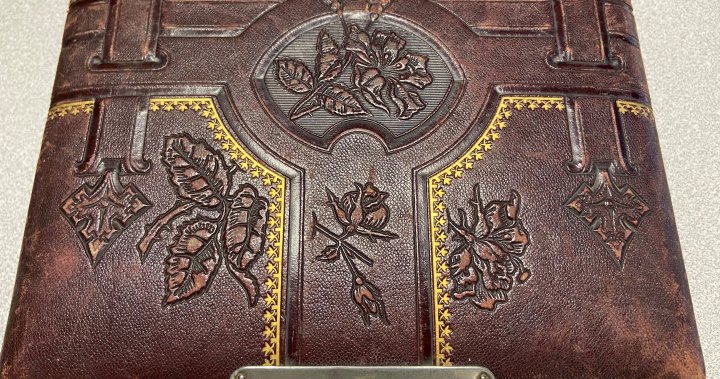The mystery of an antique photo album, anonymously delivered to Global News Edmonton, unfolded like a historical detective story. Sarah Ryan, a reporter and anchor, embarked on a year-long quest to uncover the secrets held within its sepia-toned pages. The album, a fascinating blend of formal studio portraits and candid snapshots, offered glimpses into two distinct eras and locales: late 19th-century Scotland and the Canadian Prairies of the early 20th century. The journey to unravel the album’s provenance involved consultations with photography experts, historical researchers, and genealogical societies, weaving together a narrative spanning over a century.
The investigation began with the most basic questions: Was the album stolen? Edmonton police records revealed no missing album reports. Ryan then sought the expertise of Fay Cunningham, a seasoned photographer from the Antique Photo Parlour. Cunningham’s examination revealed the album’s remarkable condition, considering its age. She identified the oldest photos as late 19th-century studio portraits, noting the formal poses, elaborate attire, and the absence of smiles – a reflection of the era’s social conventions where smiling for a photograph was considered foolish. The clothing suggested a family of considerable means, as elaborate gowns and tailored suits were hallmarks of affluence. The technical aspects of the photographs also offered clues; the long exposure times required by natural light sources necessitated the use of neck braces and back supports to maintain stillness.
Delving deeper into the album’s origins, Ryan consulted Barbara Isherwood, an art history lecturer at the University of Toronto. Isherwood identified the presence of “carte de visite” images, small, affordable photographs popular during the Victorian era, often exchanged like trading cards. A crucial clue emerged from the photographer’s embossed calling card on the photo mats, which included the studio’s name and address in Glasgow, Scotland. Ryan’s research led her to a website documenting Victorian photographers, where she found matching calling cards, placing the earliest photos around the 1880s. However, attempts to contact the website’s creator proved futile, suggesting a deliberate desire for anonymity.
The album’s narrative took a transatlantic turn with the discovery of more recent photos, likely from the 1910s-1920s. These images depicted horses, farm fields, and children – scenes suggestive of Prairie life. The hypothesis emerged that the family had immigrated from Scotland to Canada, bringing their photo album with them. The discovery of two names, Lillian and Hellen Shipp, inscribed on the back of a photo, provided a concrete lead. Ryan contacted the Alberta Genealogical Society, whose volunteers used the names and a photo of Sunnyfield Farm to trace the Shipp family history.
The genealogical research led to a connection with a woman bearing the Shipp surname, but her husband, who might have held the key to the album’s history, had passed away. Furthermore, his remaining family expressed no interest in the album or Global’s story. This lack of interest highlighted a poignant reality: while antique photo albums hold little monetary value, their true worth lies in the personal and familial memories they encapsulate. The Shipp family’s indifference suggested a possible reason for the album’s anonymous arrival at the television station – a lack of perceived significance within the family.
Despite the Shipp family’s disinterest, the album’s historical value remained undeniable. Recognizing its importance, the Edmonton Archives expressed interest in preserving the album, and Global News committed to donating it. The album’s journey, from a mysterious arrival at a news station to its eventual placement in an archive, underscores the power of historical artifacts to connect us to the past, even when the direct descendants of those depicted show no interest. The album, initially a puzzle, became a testament to the enduring power of photography to capture moments in time and the dedication of individuals like Sarah Ryan to uncover the stories behind them.

